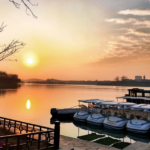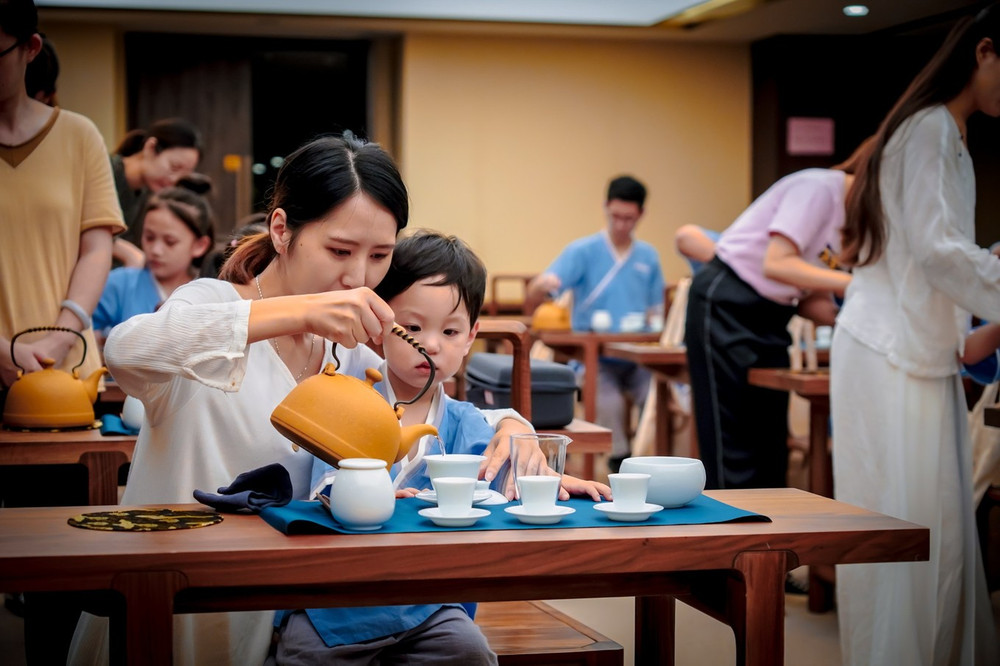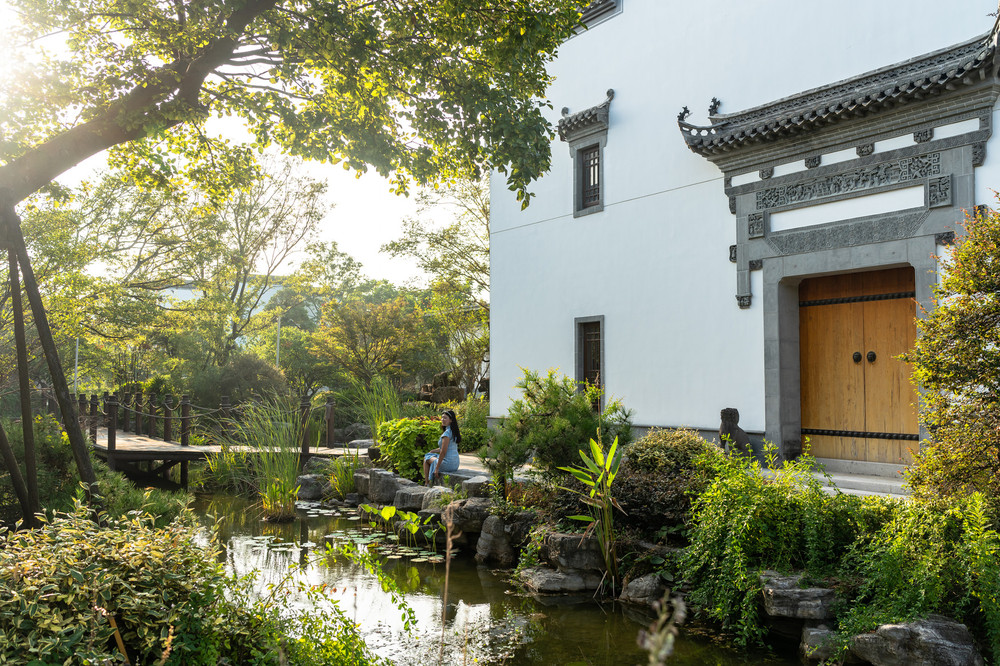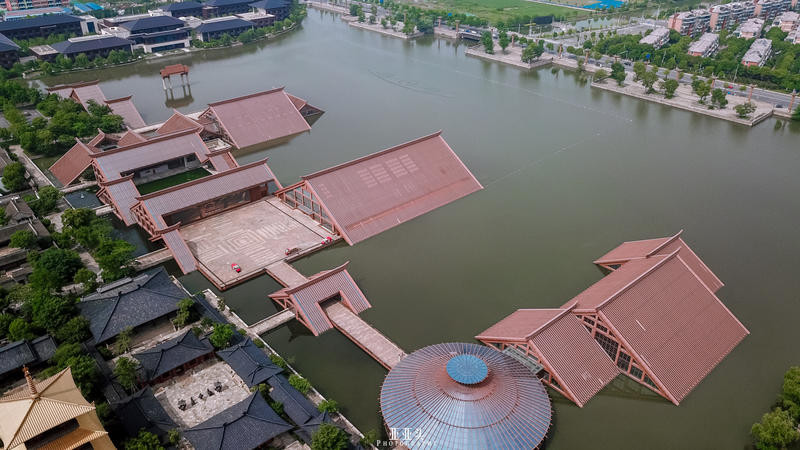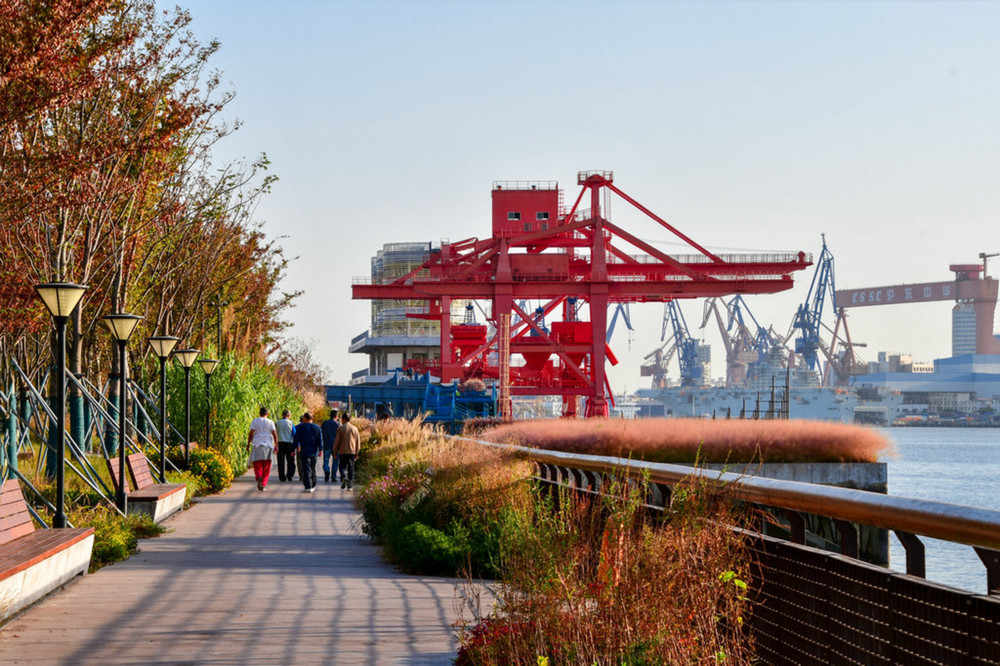**Jin Chao 8 Alleys: A Shanghai Cultural Getaway**
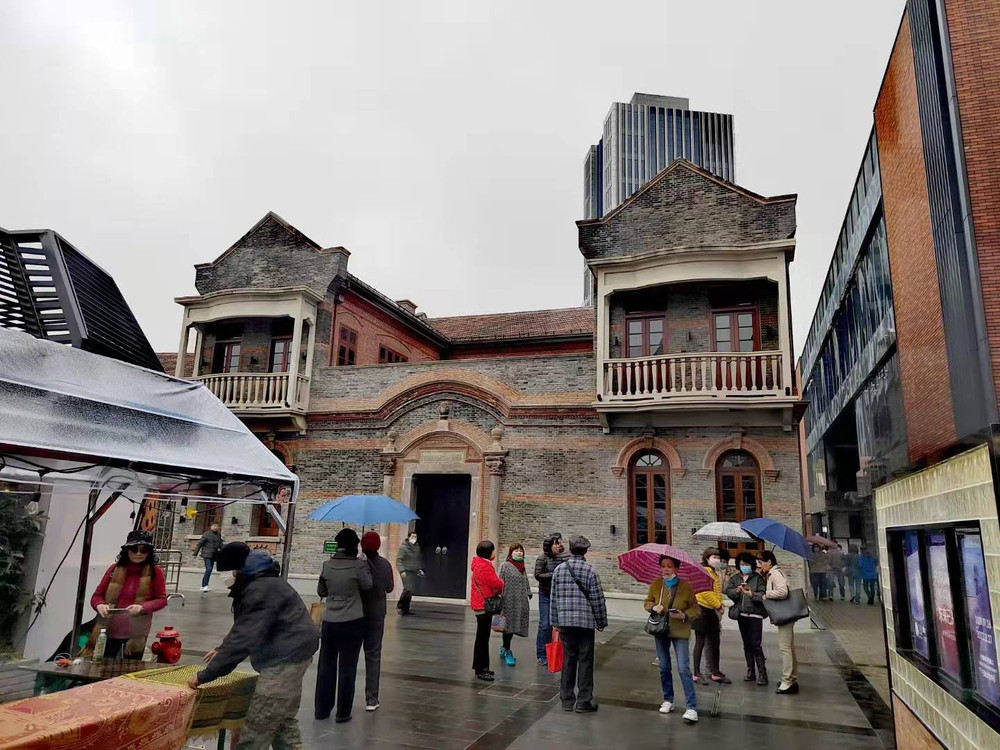
**Duration: 1 Day**
**Time: December**
**Cost per Person: 50 Yuan**
**With Whom: Spouse**
**Activity: Cultural, Free and Easy, Weekend Getaway**
**Posted on: 2022-01-23 11:52**
Shikumen is a distinctive feature of Shanghai’s residential architecture. In November 2021, news reported the opening of a new Shanghai-style trendy urban landscape, ‘Jin Chao 8 Alleys’, in Hongkou District, marking it as a new landmark. Located at the intersection of Sichuan North Road and Wujin Road, 5 kilometers north of the Oriental Pearl Tower and 12 kilometers from my home, Jin Chao 8 Alleys has become a must-visit destination.
On December 12, 2021, at 9:30 AM, my wife and I set out to explore the Shikumen scenic spot. The weather was overcast with light rain, just after the rain had stopped. We rode bicycles to Lan Cun Road, took the Line 4 to Hailun Road, transferred to Line 10, and got off at Sichuan North Road. The exit 3 of the subway station leads directly to the entrance of ‘Jin Chao 8 Alleys’. We arrived at 10:20 AM to find the weather cloudy with misty rain, the ground wet. A group of elderly women, dressed in colorful clothes and speaking loudly, were walking around in front of us.
After showing our health code and having our body temperature measured, we proceeded to walk through the 8 alleys one by one. The clear water and bare brick walls were well-maintained, the glass windows were clean, and the upper parts featured different railings. Each house now serves a purpose, either for display or for selling small goods, though most were closed. As we walked through the alleys and took photos, high-rise buildings loomed in the distance, a constant reminder that we were in the urban heart of Shanghai.A door was closed with a sign that read: “The 16th Hongkou Oral Cavity, Early Spring Joy, Four Seasons will have local products and markets.” The historical heritage of Shanghai is hidden in the small alleys, and the modern flavor and Shanghai-style culture are mostly helpless in “doing Taoism in a snail shell.” Alleys are a unique form of residential buildings in the Jiangsu, Zhejiang, and Shanghai areas, representing the characteristics of modern Shanghai urban culture. Shanghai people all have alley complexes. The previous generation of Shanghai people created a variety of unique alley cultures.
I was born and grew up in Xiao Ri Hui Bridge Alley outside Suzhou’s Xu Men, belonging to the generation who grew up in alleys. The east-west alley is less than 300 meters long, wider in the west and narrower in the east, with rows of pink walls and black tile houses. Some of these houses are Shikumen, as is my home, but the south-facing door is plastered with cement, imitating Shikumen. There were many children, playing marbles and chess in the alleys all day, scraping foreign paintings and rolling copper plates, and two bricks and two sticks could play “gnawing meat bones.” As a teenager, I didn’t know the taste of sorrow; the happiness of childhood was connected with the alleys.
Walking to the edge of the scenic spot, there was a long row of plastic sunshade tents, all small merchandise stalls, and some were not open today due to the rain. Walking into the “Shanghai Wu Yi Zhi Cultural Communication Company’s studio,” selling cold drinks, paintings, and small gifts, only people took photos, and no transactions were seen.At 10:50 AM, I approached the “Future Has Come Digital Art Exhibition,” but it was not open yet. Upon entering, one is greeted by an array of advertisements for various art and cultural events. These include the “Elegant Shanghai Art Collection,” “Artistic Imagination Performances,” “Urban Adventure Space Art Exhibition,” and “Boundless Youth Art Exhibition.” These events enliven the atmosphere during weekends and holidays.
Capturing photographs of my wife against the backdrop of refurbished lanes, I noticed the lanes, now five to six meters wide and paved with bricks, are clean but lack the authenticity of the past. Leaning against windows and holding onto doors, we reminisced about the lane where I grew up, with its cobblestone paths and the lively evenings of summer. As the sun sets, each household would splash water outside their doors, setting up long benches, chairs, door panels, and bamboo couches. Meals would begin before dusk, and as the lights came on, children would play chess and cards under the streetlights, adults would chat with fans, and the youth would tell stories and sing Shanghai opera.
The unique Wu culture of Suzhou has been passed down from generation to generation through the alleys of the ancient city, which are home to over a thousand streets and lanes. Jin Chao 8 Nong consists of eight lanes with sixty Shikumen buildings. Entering an old house, the ground floor facing the street sells cars, and the elevator leads to the third floor, which is a chaotic construction site, while the second floor remains still.As a light rain continues to fall, at 11:20, I take the subway back home. The lanes correspond to the alleyways in the north, with the main roads of cities since the Han Dynasty in China known as ‘streets,’ and the smaller paths within residential areas as ‘alleys.’ Beijing has Wangfujing Street, Chengdu has Kuanzhai Alley, and Suzhou’s unique Wu culture thrives thanks to the over a thousand streets and alleys in the ancient city area that carry this heritage.
Tang: I’ve learned a lot about streets and alleys, and my childhood memories are full of them.
Yang: Suzhou has also created a Republic of China-era housing area at the old Changmen North Wharf. It’s worth a visit.
Zhu: The houses on the Bund in Shanghai are treasures.
Wu: Even though it’s raining today, Sister Tang went out and looked beautiful.
Tang: Today, we both have a day off, so we can go a bit further.
Chen: The past and present of lane culture, narrated with joy and warmth, make listeners feel as if they are there, reminiscing about childhood life, listing memories like treasures, resonating with readers.
Li: Childhood memories, beautiful recollections.
Wang: Sister Tang’s graceful posture adds luster to the Shikumen. The story of Shikumen evokes the joy of childhood life. Entering Shanghai, experiencing Shanghai.
Tang follows: Haha, I learn from your grace.
Song: The beautiful old lady, the Shikumen in its new attire still retains its old charm.
Wang: Childhood memories, Sister Tang is beautiful.





